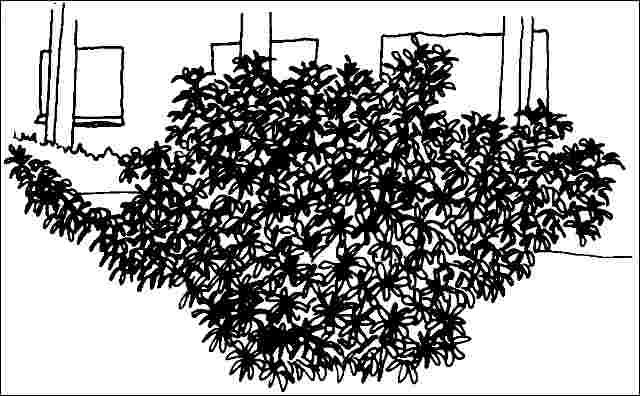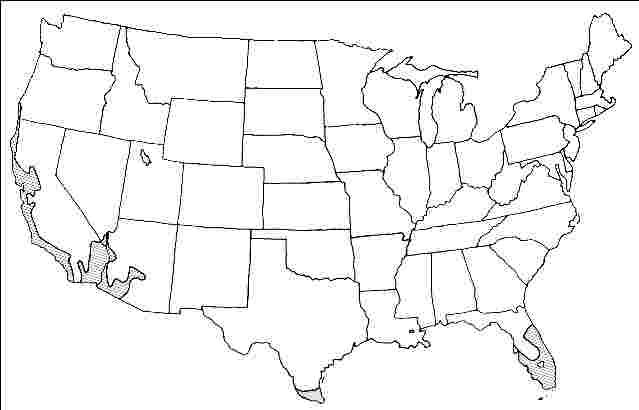Schefflera arboricola: Dwarf Schefflera1
Introduction
This evergreen shrub has attractive dark green, glossy, palmate leaves densely covering flexible, green stems which gently fan out into a rounded crown. Plants are usually seen with multiple stems sprouting from the base. Branching can be encouraged by pinching the stems, which forms a denser shrub. It can be pruned into a small tree over a period of years where it would make an accent or patio tree. The tree remains a green mass, not changing during the year, except when it displays the brilliant orange-yellow fruit in the winter.

General Information
Scientific name: Schefflera arboricola
Pronunciation: shef-LEER-uh ar-bor-ih-KOLE-uh
Common name(s): Dwarf schefflera
Family: Araliaceae
USDA hardiness zones: 9B through 11 (Fig. 2)
Origin: not native to North America
Invasive potential: little invasive potential
Uses: trained as a standard; indoors; deck or patio; container or planter; specimen; hedge; espalier
Availability: not native to North America

Description
Height: 10 to 15 feet
Spread: 6 to 15 feet
Crown uniformity: irregular
Crown shape: round, vase
Crown density: dense
Growth rate: moderate
Texture: medium
Foliage
Leaf arrangement: alternate (Fig. 3)
Leaf type: palmately compound
Leaf margin: entire
Leaf shape: elliptic (oval), obovate
Leaf venation: pinnate
Leaf type and persistence: evergreen
Leaf blade length: 2 to 4 inches
Leaf color: green
Fall color: no color change
Fall characteristic: not showy

Flower
Flower color: green
Flower characteristics: not showy
Fruit
Fruit shape: round
Fruit length: less than .5 inch
Fruit covering: fleshy
Fruit color: orange
Fruit characteristics: does not attract wildlife; showy; fruit/leaves not a litter problem
Trunk and Branches
Trunk/bark/branches: branches droop; not showy; typically multi-trunked; thorns
Pruning requirement: needed for strong structure
Breakage: resistant
Current year twig color: green
Current year twig thickness: thick
Wood specific gravity: unknown
Culture
Light requirement: partial sun, partial shade, shade tolerant, or full sun
Soil tolerances: clay; sand; loam; acidic; slightly alkaline; well-drained
Drought tolerance: high
Aerosol salt tolerance: moderate
Other
Roots: not a problem
Winter interest: no
Outstanding tree: no
Ozone sensitivity: unknown
Verticillium wilt susceptibility: unknown
Pest resistance: resistant to pests/diseases
Use and Management
A popular house plant, dwarf schefflera performs well in a variety of outdoor settings. It can be used as a hedge, specimen planting, poolside container plant, and even trains well into an espalier on the wall of a building. Aerial roots originate from the lower portions of the trunks and branches, and root into the ground.
Dwarf schefflera is adaptable to sun, part sun or deep shade and does best on light, sandy, well-drained soils. The plant prefers soil which is kept on the dry side. One of the best hedges for shady areas.
There is a cultivar available with variegated foliage.
Propagation is by seed, cuttings, or air-layers.
Pests
Scale and spider mites may be a problem when dwarf schefflera is grown indoors but outdoors pest problems are rare. Occasionally scale may infest this tree.
Diseases
No diseases are of major concern.


